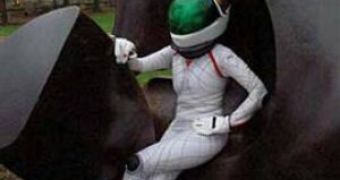Some innovative designs for the future spacesuits are being developed at MIT, after many years of work and they will be a space clothing revolution similar to the passing from the long johns to bikinis. No, the future spacesuits won't show that much skin, but they will be ultralight and...ultratight.
Other groups are also working on their versions of the next astronaut fashion show and the winning product will be presented on a unique catwalk: on the surface of the Moon and possibly even on that of Mars.
For now, NASA is not really into fashion, as they use only one type of suit during the launch and re-entry of the space shuttles, the famous orange ones nicknamed "pumpkin suits." As Halloween can't last forever, they also have one for spacewalks, the Extravehicular Mobility Unit, or EMU.
Besides being out of fashion for half a century, these old suits are also bulky, heavy and don't offer too much freedom of movement for the astronauts. Each weighs about 225 pounds (102 kilograms), more than twice the weight of the actual astronaut inside. Weight is not so much of a problem in microgravity, but the suits are also somewhat oversized, being equipped with numerous life-support and communications gear.
The new suits that NASA is waiting for should be more lightweight and easier to move in and should also be adaptable for use during launch and re-entry as well as for spacewalks and surface operations. This is what MIT researcher Dava Newman is showing off, a new lightweight, more flexible and tight suit and she hopes it will be selected by NASA in the coming months as the next garments for the astronauts.
The first big difference is the fact that astronauts will stop looking like hot air balloons and will have a more superhero-ish look, with fancy high-tech gadgets in a nice looking outfit. The astronaut inside won't have to make serious efforts to bend the suit, as now 70 to 80 percent of the energy expended by a spacewalker goes to bending the suit's joints against that pressure and will move more naturally.
So, the new product is not only skintight and good looking, it also performs as well as the classic ones when it comes to protecting the people inside it from radiation, shock and hypothermia and it will be the future far frontier of space fashion.

 14 DAY TRIAL //
14 DAY TRIAL //